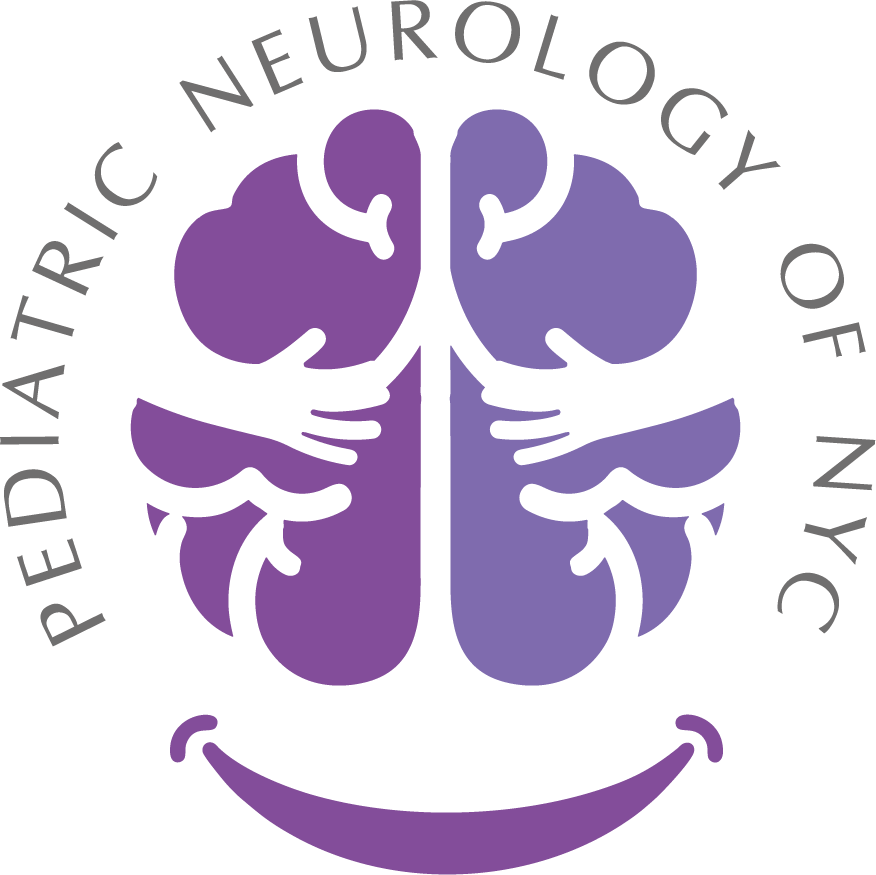Seizures and Epilepsy
Seizures and Epilepsy Treatment in NYC
One of the most common reasons children are seen by neurologists is due to concerns for seizures. How our brains work is similar to how our heart works, through currents of electricity in pre-planned circuits. These electrical circuits in the brain have expected patterns and behaviors that develop and change with age and development. What the brain is doing at rest, during sleep and during events of concern are all important pieces of the puzzle in understanding if something is a seizure and if a person has epilepsy.
At Pediatric Neurology of NYC, we are dedicated to providing expert, compassionate care for children with seizures and epilepsy.. Our approach combines the latest medical advancements with a deep understanding of the needs of each individual child and their family.
What is a seizure?
Whole body shaking is often the first image that pops into people’s minds when they think of seizures, but seizures can present in many ways from abnormal movements, changes in level of awareness or abnormal sensations that occur suddenly and without warning. Sometimes even without paroxysmal events, there can be changes to alertness or development that raise concern for abnormalities in how the brain is working.
When the electricity in the brain synchronizes abnormally, this can present as a seizure. Seizures can occur sometimes due to changes in the blood like low sodium, low blood sugar, or infections and inflammation, or sometimes because of an underlying tendency towards epilepsy that may be genetic or due to structural abnormalities in the brain.
Clinically, a seizure may be simple rhythmic movements of an arm, leg or the whole body that cannot be suppressed, sometimes muscle jerks or sometimes transient changes in awareness like staring. Typically, a person experiencing a seizure cannot stop the movements or behaviors nor can someone else intervene, to stop a seizure.
What is epilepsy?
Epilepsy is the tendency to have recurrent unprovoked seizures. For some children, this diagnosis is made by having more than one unprovoked seizure. For others, the diagnosis can be made after a single event and having an abnormality on their EEG. Some epilepsies can be ‘outgrown’ and may be an issue during a certain phase of childhood and other epilepsy syndromes may be life long. The types of seizures, frequency of seizures and how they respond to different treatments and medications can vary significantly. The underlying genetic causes of epilepsy has been a rapidly evolving area of neurology, providing physicians more understanding and ability to aid patients with management of seizures.
Home » Seizures and Epilepsy
What are the types of seizures in children?
Seizures in children can be classified into various types, including:
Generalized Seizures:
These are caused by abnormal brain activity across both sides of the brain. These include tonic-clonic (formerly known as grand mal) seizures, absence seizures, and others.
Focal Seizures:
These are seizures that occur due to abnormal brain waves in one region of the brain. Because the abnormal electrical pattern is only happening in one region of the brain, depending on how large an area, and where in the brain this abnormality is, sometimes people can remain aware during their seizures, even able to communicate. But other focal seizures can impair awareness.
Non-epileptic Events:
Sometimes events that look like seizure are actually not related to abnormal brain waves.
How do we diagnose epilepsy and seizures?
Diagnosis involves a thorough evaluation, which may include:
Tics often run in families, suggesting a genetic component to their development.
Imbalances in brain chemicals, such as dopamine, are thought to play a role.
Stress, anxiety, or excitement can exacerbate or trigger the onset of tics.
What treatment options are available?
Treatment for epilepsy and seizure disorders is highly individualized and may include:
Medications:
Anti-seizure medications (ASMs) (also known as antiepileptic drugs (AEDs) are a mainstay of treatment with a goal of using a single medication when possible. These can decrease the ‘irritability’ of the brain through modifying brain chemistry and can decrease the frequency of seizures.
Dietary Therapies:
Depending on the cause and severity of seizures, some specific diets can be very effective in seizure management. A common example of dietary therapy is with a ketogenic diet. It is important to use these dietary therapies with the guidance of a physician and nutritionist.
Surgery:
If two of more medications are failed, patients may be a candidate to have a surgical evaluation at an Epilepsy Surgery Center to determine if surgery may be beneficial.
Neurostimulation Therapies:
The Vagal nerve is important nerve that begins in the neck and travels along the body and for some patients, stimulating this nerve can decrease frequency of seizures and / or be stimulated to help stop a seizure.
Can children with epilepsy lead normal lives?
With proper management and care, many children with epilepsy can lead active, fulfilling lives. Our goal is to control seizures as much as possible while minimizing side effects and supporting the child’s overall development.
If your child has been diagnosed with epilepsy or is experiencing seizures, Pediatric Neurology of NYC is here to provide the care and support you need. Dr. Jamie Lee Palaganas and our team of specialists are committed to delivering the highest standard of pediatric epilepsy care. Contact us for a consultation and take a proactive measure toward effective seizure management and improved quality of life for your child.
